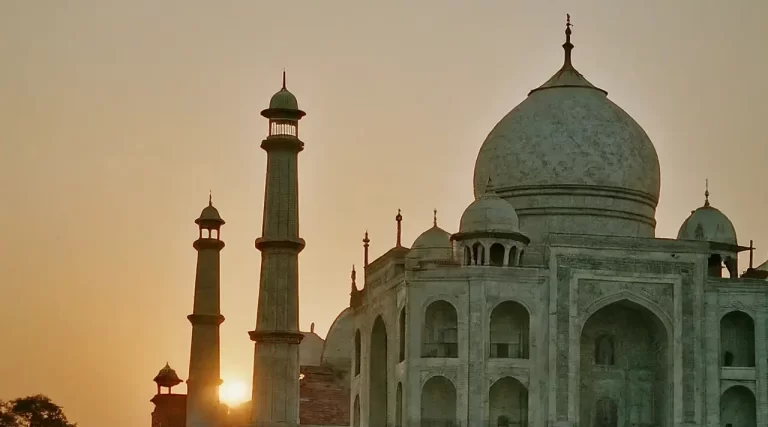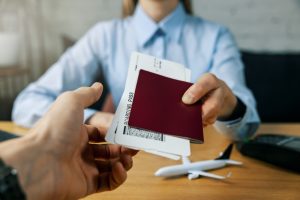India – a country so vast and diverse that its seasons paint it in starkly different hues. Choosing the best time to travel to this vibrant land can make all the difference in your experience. From the breezy coolness of its northern hills to the sun-soaked beaches of its coastal south, each corner of India offers its own unique allure. Let’s embark on a journey through the seasons to discover the ideal time for your Indian adventure.
Exploring the seasons of India
India’s vast geographical spread means it’s blessed with a multitude of climates, each presenting a different facet of this colourful nation. Generally, the climates range from the snow-capped Himalayan north which can be bitterly cold in winter, to the tropical south where it remains warm most of the year. Understanding India’s climatic diversity is crucial for planning your trip, as the weather significantly influences both your experience and the kind of activities available.
The onset of spring and autumn brings with it moderate temperatures and lesser crowds, making them ideal times for those looking to explore India’s rich history and culture in comfort. These transitional seasons offer a pleasant climate suitable for outdoor adventures and are perfect for sightseeing, providing clear skies and a vibrant display of nature.
The peak travel season: October to March
The months from October to March are considered the peak travel season for much of India when the weather is mostly dry and cool. It’s the perfect time to lounge on the beaches of Goa, explore the desert landscapes of Rajasthan, or engage in the myriad of festivals that dot the calendar, including Diwali, the Festival of Lights, and Holi, the Festival of Colors. Travelers also have the best chance to spot wildlife during these months as animals frequent water sources, making national parks like Ranthambore and Bandhavgarh teeming with activity.
However, peak season also means higher prices and more tourists. Accommodations can be scarce without proper planning, and popular tourist spots can be crowded. To make the most of this season, early booking and a flexible itinerary can help avoid the throngs and fully savour the marvels of India’s natural and cultural heritage.
Enjoying the monsoon magic: June to September
The monsoon season, from June to September, transforms India into a lush paradise, particularly along the Western Ghats and in the northeast states like Meghalaya, which is billed as the wettest place on Earth. This season is ideal for those who relish in the romanticism of rain-drenched landscapes and verdant greenery. Monsoon is celebrated through a multitude of festivals such as Teej and Onam, offering a glimpse into the local culture and traditions amid showers.
Traveling during the monsoon does come with its set of challenges, including possible travel disruptions due to heavy rainfall. However, for the intrepid traveler, this period offers the unique allure of rain-soaked landscapes and the advantage of off-peak tourism benefits like reduced prices and fewer crowds.
Offseason advantages: April and May
The scorching heat of April and May marks the offseason in most of India, yet it is the best time to visit the mountainous regions of Himachal Pradesh and Uttarakhand. The clear skies provide perfect conditions for trekking and exploring the natural beauty of the Himalayas. Additionally, the offseason means you can enjoy substantial discounts and more personal attention at hotels and resorts, offering unparalleled value for your travel.
Regional festivals and events worth traveling for
India’s calendar is punctuated with festivals that showcase the country’s diverse culture and traditions. Experiencing these celebrations can provide an insightful glimpse into the heart and soul of India. The Pushkar Camel Fair in Rajasthan offers a vibrant spectacle, while the Sikkim Flower Festival highlights the unparalleled beauty of the Himalayan flora. Each region of India has its own unique festivals and events, making any time a good time to witness the cultural richness of the country.
Among the plethora of events, the Kumbh Mela stands out for its spiritual and cultural significance. Held every twelve years in four different locations, it’s a pilgrimage that brings together millions of people in a harmonious celebration. Planning your trip around these festivals can provide a more profound understanding of India’s enduring traditions and communal spirit.
Tips for planning your trip to India
When planning your trip to India, it’s essential to consider not just the best time to travel, but also your interests and the regions you wish to explore. Begin with a rough itinerary that offers flexibility, keeping in mind that India is a vast country and travel times can be longer than anticipated. Packing smart is also key; be prepared for the unpredictable weather with layers and protective gear.
Staying healthy is crucial; ensure you’re up to date with vaccinations and carry a basic medical kit. Finally, embracing the local culture with an open mind and heart will enrich your journey, allowing you to fully experience the warmth and diversity of India. Whether seeking spiritual solace, adventure, or cultural enrichment, India offers myriad experiences waiting to be discovered.
Embrace the Journey Through India’s Seasons
Traveling to India is akin to stepping into a kaleidoscope; with each turn, the colors and patterns shift, unveiling new wonders. Whether you’re drawn by the cool retreats of the Himalayas or the tropical warmth of Kerala, the best time to visit depends largely on the experiences you seek. Embracing the country’s climatic diversity can transform your trip into an unforgettable journey. Just remember, India isn’t just a destination; it’s an experience that changes with the seasons.
Faqs
Which is a famous place in Amritsar?
The Golden Temple is the most famous and bustling place in Amritsar.
Are 2 days sufficient for Amritsar?
Yes, 2 days can be sufficient for a Amritsar trip if you want to witness the historic and cultural hot spots in the city.
How many places to see in Amritsar?
Amritsar has a lot of iconic landmarks including Golden Temple, Ram Tirath Temple, Shri Tarn Taran Sahib Temple, Sadda pind, and Dukh Bhajani Beri, among others.
What is there to eat in Amritsar?
Amritsar offers some of the popular cuisines such as Amritsari kulcha, lassi, make di roti & saag, and chole puri, among others.
Is Amritsar safe to visit at night?
Yes, places like the Golden Temple, Sadda pind, Ram Tirath Temple, etc. are absolutely safe to spend time with friend or family at night.
For further inquiries or assistance related to travel, flight booking or accommodation, feel free to contact Mann Travel Canada. Our dedicated and lively team is there to cater to all your travel needs ans ensure a seamless journey to Amritsar.
Phone number : (604) 265-9000
Email address: support@manntravel.ca






